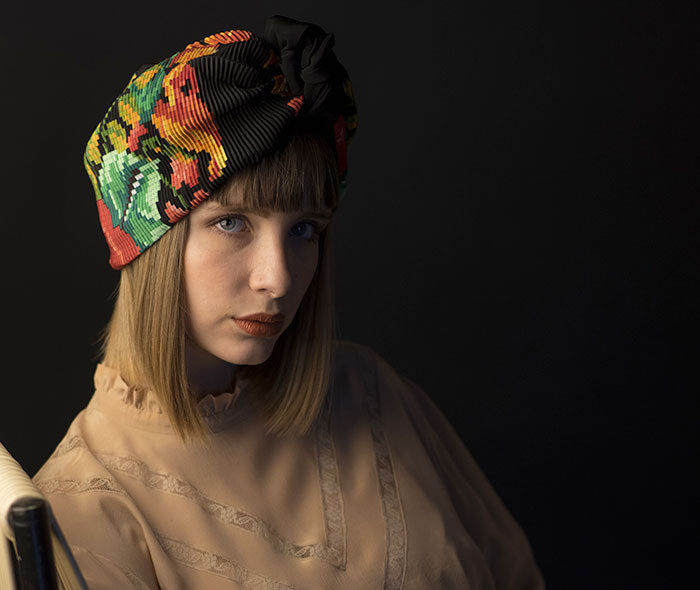Religion and fashion, sacred and profane. Contemporary turbans, before being such, cross millennia, people and continents. The accessory, very popular today, worn by the coolest fashionistas and produced by many companies, including prominent emerging brands, was born in India. Thanks to the Sikhs, who introduce it as a permanent element of their religious dress.
In red, orange or blue fabric - depending on seniority within the congregation - the turban is wrapped around the head and fixed just above the forehead. A decidedly current image, and it's crazy if you think that the monotheistic cult of Sikhism was born in the fifteenth century.A little later, about a century, thanks also to the development of the transportation, the cult of this headgear reached Europe: thus the western prototypes of what we now call contemporary turbans are born. It comes thanks to the Turks, who used to call it tublent, from dubland, in Persian.


On an aesthetic level, little changes, however it is the subject to wear it that is unprecedented: the woman. In fact, if in the worlds from Thousand and One Nights it is man who uses it - as we have seen above all for religious reasons but also, given the climate, to protect themselves from the heat - in the West the sense of female taste is striking. It is no coincidence, in fact, that today the fashion brands that make these particular headdresses turn almost exclusively to an audience of women.
With the arrival of the twentieth century the whole world of fashion femme is revolutionized. And this with the arrival of two figures: Coco Chanel and Paul Poiret. Both the designers free women from bulky bodices and skirts. The silhouette is refined and... the garment is covered with luxurious turbans. Furthermore, Poiret studies in depth the fabrics, textures and typical prints in the East and modernizes them according to our taste.
Since the world of clothing is an interpretation of what happens outside of it, it is understandable the choice of Chanel and Poiret to change the way of dressing and to introduce elements belonging to exotic countries, especially when it is possible to taste the costumes in the own city, Paris. In 1909, in fact, the Balletts Russes arrived and staged the Sherazade or Le Dieu Blue shows. It is easy to understand how French fashion is seduced by those clothes, fabrics and that je ne sais quoi that makes them so attractive.


The 2000s give new life to this splendid accessory. To all intents and purposes, contemporary turbans are born. The brands that reinterpret them are many but some stand out more than others. And they are all made in Italy. Mhudi, from its atelier in Parma, conceives turbans characterized by craftsmanship and a refined and charismatic style. Francesca Passeri, founder of the brand in 2013, experiments with fabrics, such as African batik, which came to us in the 1960s. Her headdresses are unique and designed for women who want to stand out with elegance.
From Japan to Tuscany, the designer Yojiro Kake created his eponymous fashion house in 2016. In addition to a clothing line, she makes several accessories including turbans, to which he gives it very personal interpretation. Made with Italian silk, on a formal level they are inspired by origami and are hand-sewn. A completely intimate way of giving life to the turban, an element of the wardrobe that has become international.